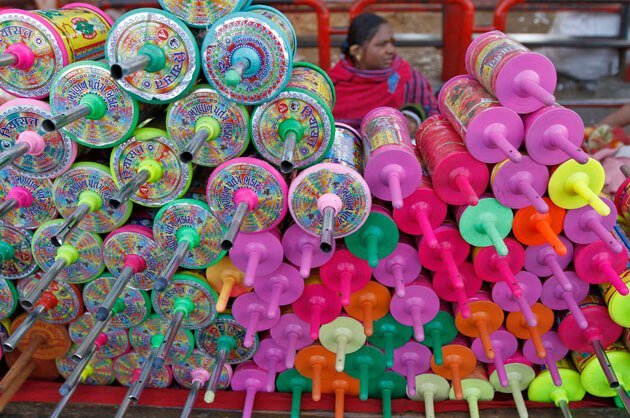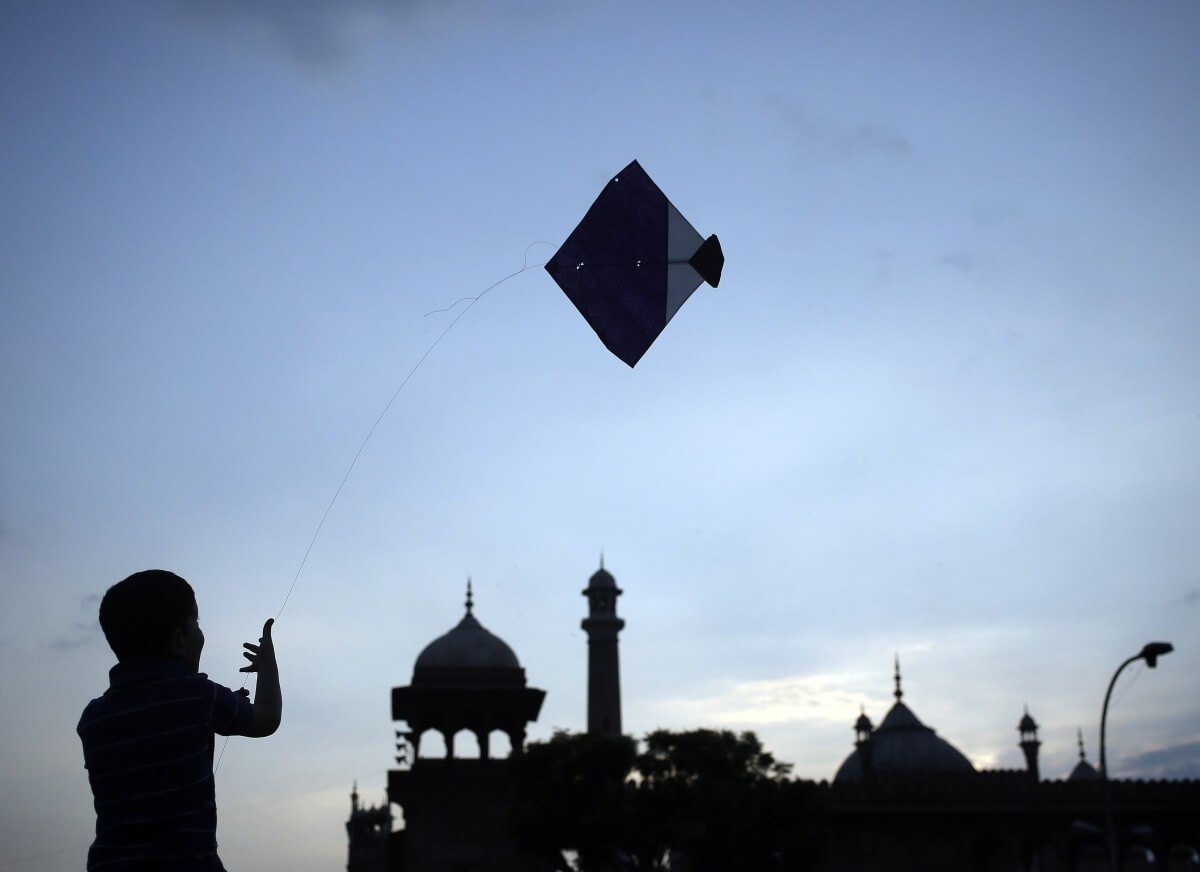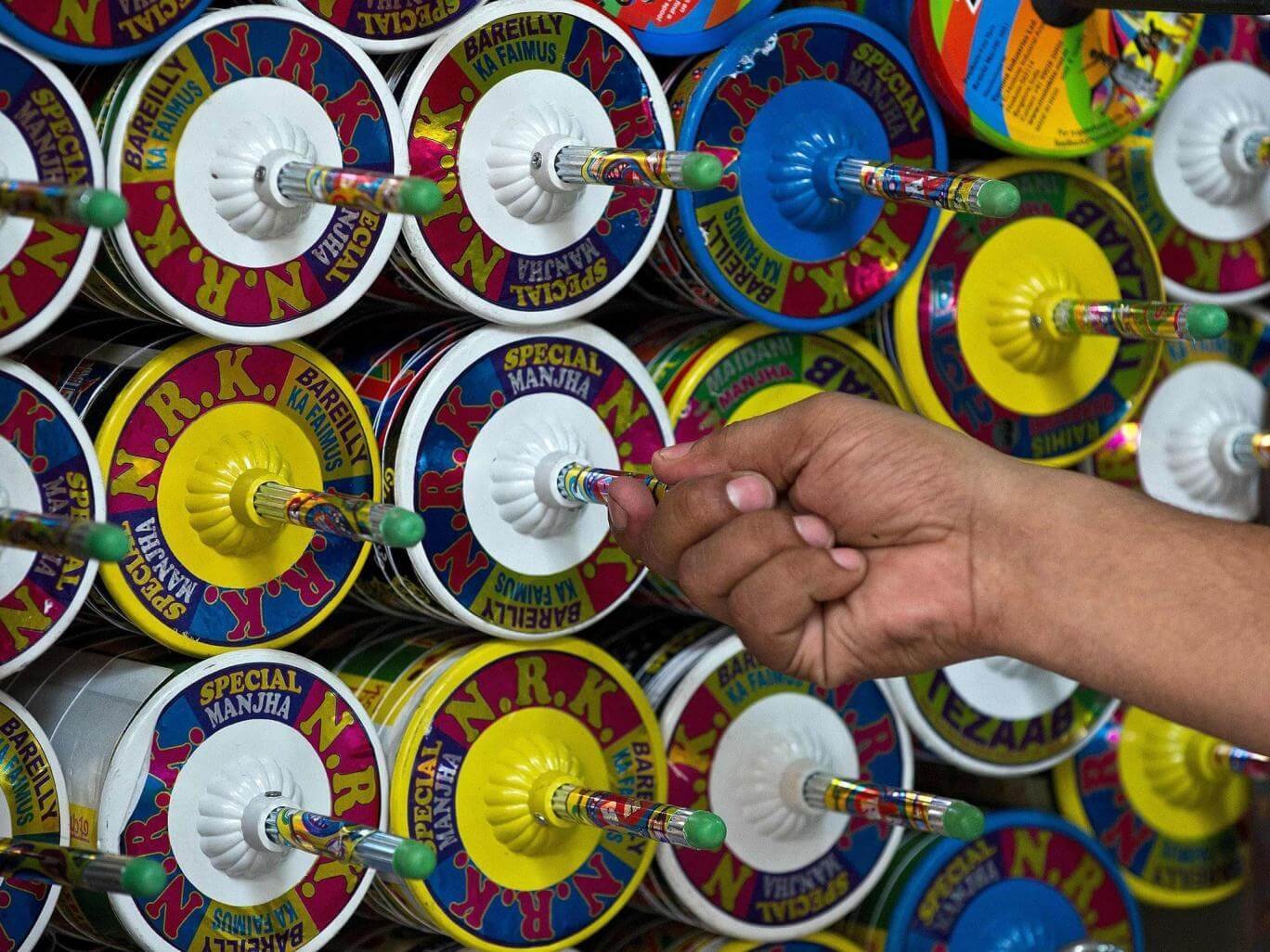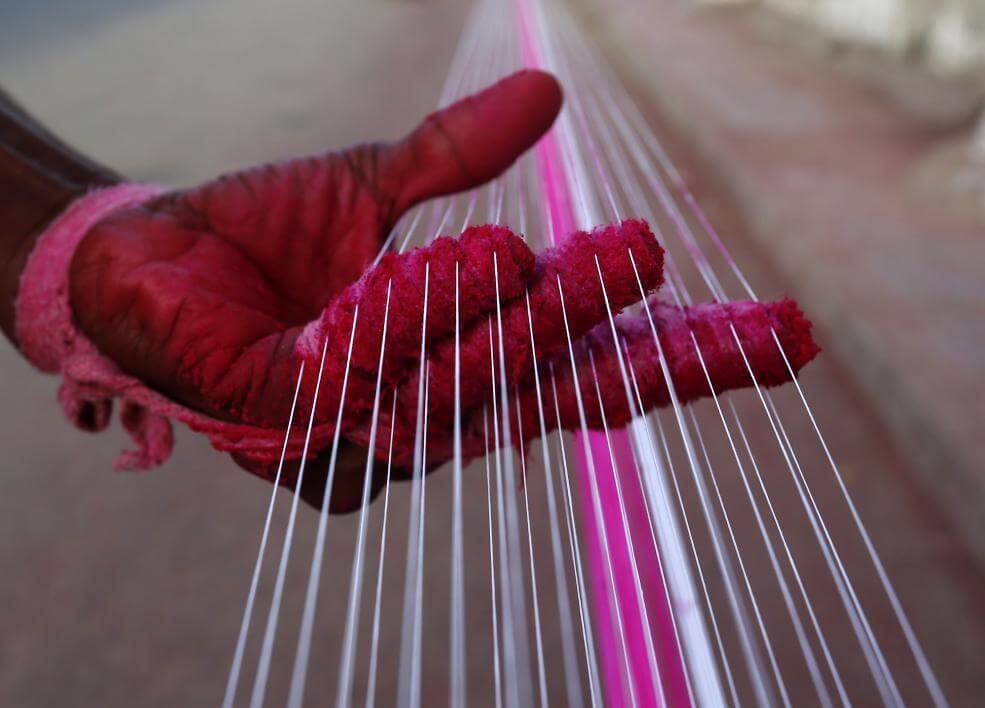New Delhi: This Independence Day, 5-year-old Aryan was feeling bored at his home in Rahul Vihar, Ghaziabad. He wasn’t in mood to play. In the late afternoon, Aryan asked his father Raja Kumar to give him a ride on his bike.
“I made him sit on the petrol tank of motorcycle and drove off towards the main road near NH-24. When I reached the Rahul Vihar intersection, I saw blood spilling on the petrol tank. Aryan’s throat was slit. I didn’t even get an inkling from where a line of manja had entangled my son,” Kumar, who works at an export company, told ScoopWhoop News.
“I rushed him straight to a nearby doctor. He got 24 stitches across his neck. Fortunately, his windpipe wasn’t affected,” Kumar said, adding, his son Aryan is now recovering at home.

While Aryan was lucky, 3-year-old Sanchi Goyal and 4-year-old Harry weren’t. Both the kids died on Independence Day – the day when most kids fly kites in the Capital- after stray metal-coated kite-thread slit their throats. On the same day, 22-year-old Zafar Khan also lost his life in west Delhi’s Vikaspuri area after his neck was slashed by the deadly Chinese manja. The incident happened when Zafar was riding his bike.
According to doctors, the most common injuries due to manja is the slashing of throats, which in most of the cases proves lethal.
“Sometimes, we also get cases of hand cuts. But if the manja cuts a person’s throat, it’s very serious because the neck constitutes some pivotal parts – blood vessels and trachea (windpipe) – of a human body’s functioning structure, ” Dr. Anurag Pandey, Consultant Plastic and Cosmetic Surgery at Sir Ganga Ram Hospital Delhi, told ScoopWhoop News.
More than a week before the Independence Day, the Delhi government had considered a proposal to ban the glass and metal-coated thread in the capital. But the ban order – after getting entangled in a bureaucratic tussle between AAP government and Delhi Governor’s office – came up a day after August 15 – the day many kite-makers call the final day of the kite-flying season.

Deputy Commissioner of Police, New Delhi district Jatin Narwal said the ban has been implemented on the ground.
“We have given the directions to our respective police stations to enforce the ban. We will ensure that no violation of the ban takes place and if it does, we will take necessary action against the culprits,” Narwal told ScoopWhoop News.
However, many feel that the ban was implemented too late in the day.
“The kite-flying season is over. Independence Day is the highest selling day of kites and the ban was announced a day after. Where was the government before that?”, Arsh, a kite-shop owner at Old Delhi’s Lal Kuan Bazar, told ScoopWhoop News.
A native of Jaipur, Arsh comes to Delhi every year for two months and rents a shop to sell kites and relevant accessories. During the onset of kite-flying season between July to August, Arsh, like most of other temporary vendors, purchases his stock from the 7-8 kite shops in the Old Delhi market and then sells it to the customers from his temporary shop.

“We get everything here from kites to Chinese manja. I personally don’t want to sell it but Chinese manjha is in high demand. Customers prefer it over the traditional cotton manjha. It’s also half the price of Bareilly manja,” Arsh said.
However, Sachin Gupta, President of the Kathkargha Laghu Patang Udyog Samiti, a body of kite sellers at the Lal Kuan market denies selling Chinese manja and alleged that temporary vendors get it along with them from their hometowns.
“90 per cent of kite-sellers here are from outside,” Gupta told ScoopWhoop News.
According to kite-sellers, Chinese manjha was first introduced in the market around eight years back.”When the manufacturers began producing the thread locally, the thread became an instant favourite among the kite-fliers owing to its cheap price and durability. However, the China-tag stayed with the product,” Gupta said.
Gujarat was the first state to wake up to adverse effects of the plastic thread after the animal rights activist brought to light the painful deaths and injuries suffered by birds due to it. After announcing ban on Chinese manja in 2009, Gujarat was followed by Maharashtra and Rajasthan in banning the Chinese manja under the provisions of Environment Protection Act, 1986. In recent years, Andhra Pradesh, Karnataka and Odisha also followed.

According to international animal rights group PETA (People for the Ethical Treatment of Animals), thousands of birds are killed every year in India from cuts or getting trapped in manja.
With the ban in place, kite-sellers in Delhi say they are happy with the government’s decision but many of them are worried about its implementation.
“The real culprits might be beyond the reach of Delhi government as the product comes here for sale only. The government has to trace the supply lines and choke them,” Babloo, whose ancestors have been selling kites since three generations, told ScoopWhoop News.
Delhi-based advocate Tariq Adeeb also shares the same view.
“The real test of the ban will be during the next kite-flying season. It also needs to be seen how far the government will be able to stop the inflow of Chinese manja into Delhi,” he said.
Feature image source: AFP

















